The Five Behaviors® model for teams
The Five Behaviors® profile system is based on The Five Dysfunctions of a Team by Patrick Lencioni.
The five behaviors Lencioni identified will result—if each is maximized—in a team that operates as efficiently and effectively as possible. The characteristics of a cohesive team are Trust, Conflict, Commitment, Accountability, and Results. Each behavior in the model builds upon the previous and supports the others. The team profile and facilitated program lets team members know how they and the team are doing, and how they can become more cohesive.
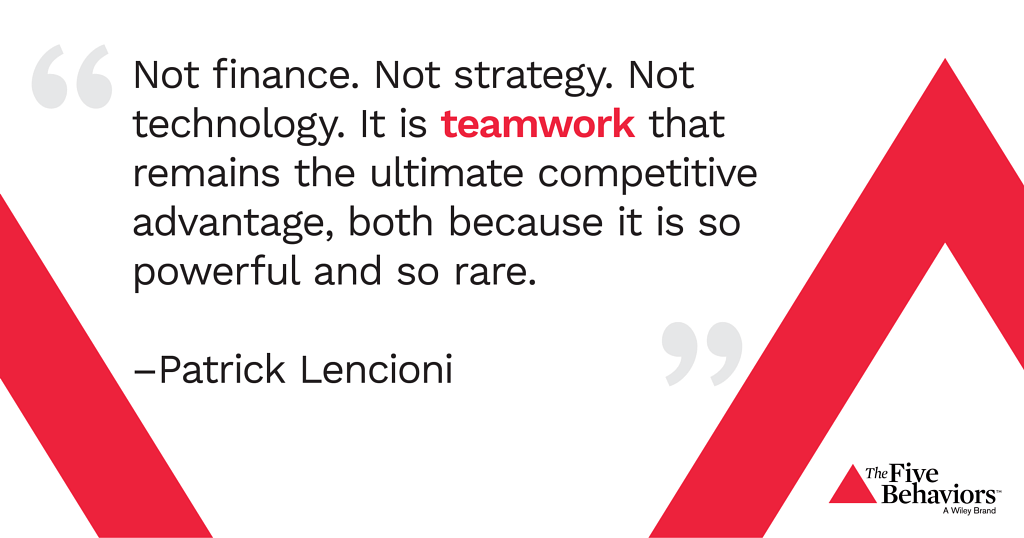
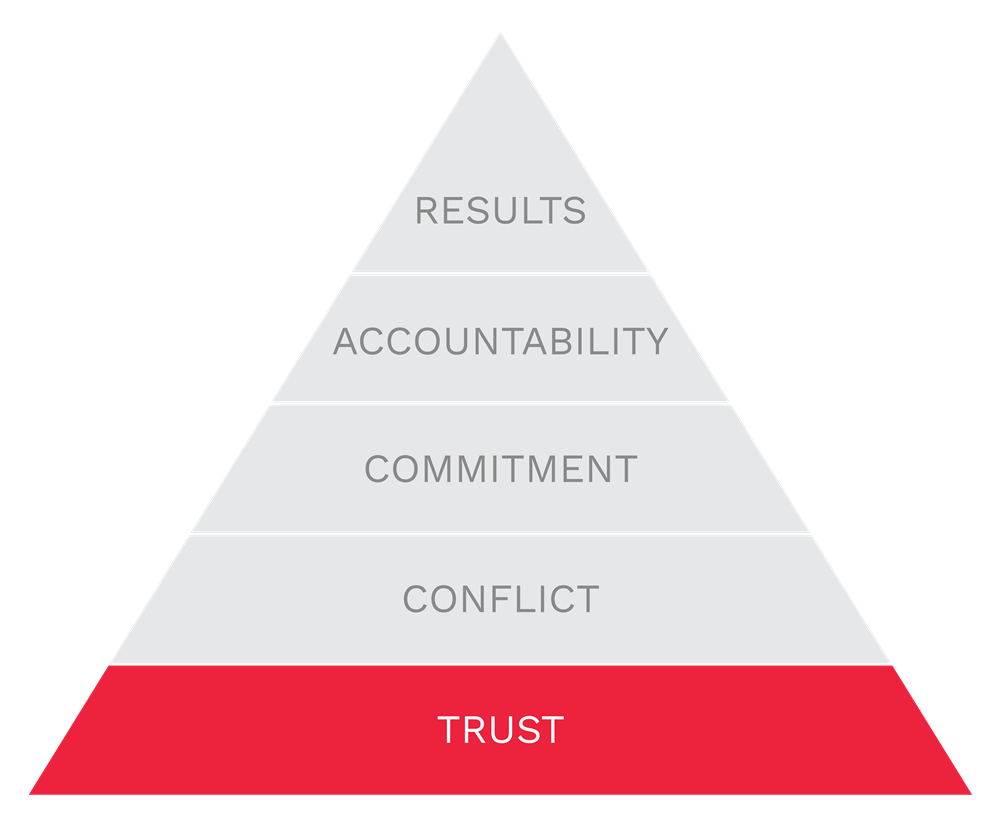
Trust
At the base of the pyramid is trust. Without trust on the team, very little progress can be made in gaining cohesiveness overall. Vulnerability-based trust (the ability to expose one’s weaknesses) is key to building the relationships required to be able to withstand and even benefit from both the routine and unique challenges every team faces.
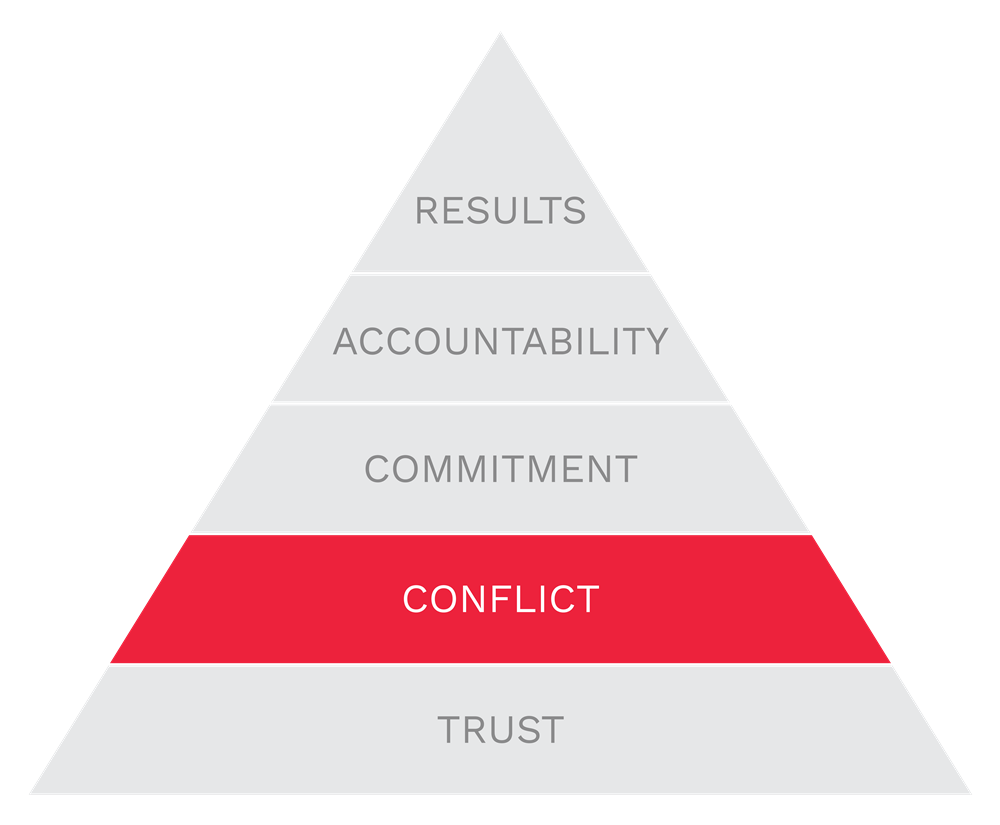
Conflict
Conflict is sometimes considered dangerous on a team because it can lead to hard feelings. However, if the team has relationship trust, members feel secure enough to be honest and courageous. If trust is truly in place, conflict is constructive. In fact, conflict is critical to ensuring that all points of view and aspects of issues have been discussed, understood, and taken into account. Teams without conflict tend to shut out valuable feedback which can lead to poor decision-making.
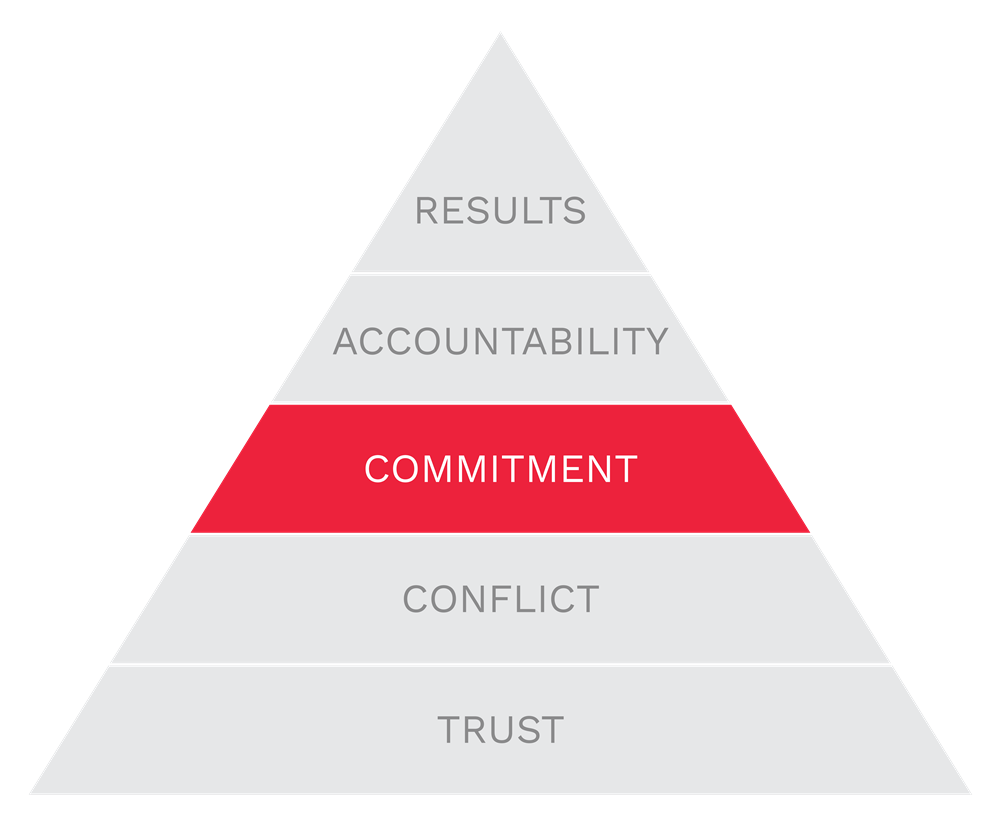
Commitment
Gaining commitment from team members is not the same as getting consensus. According to Lencioni, reaching consensus means compromise, and compromise might not yield the best result. Commitment comes with clarity of purpose. Take a problem for which there are several ideas. With trust and appropriate conflict, the team chooses the idea they will pursue. Though only one idea is chosen, every member understands why that idea was selected and supports the idea—both inside the team and when communicating externally.
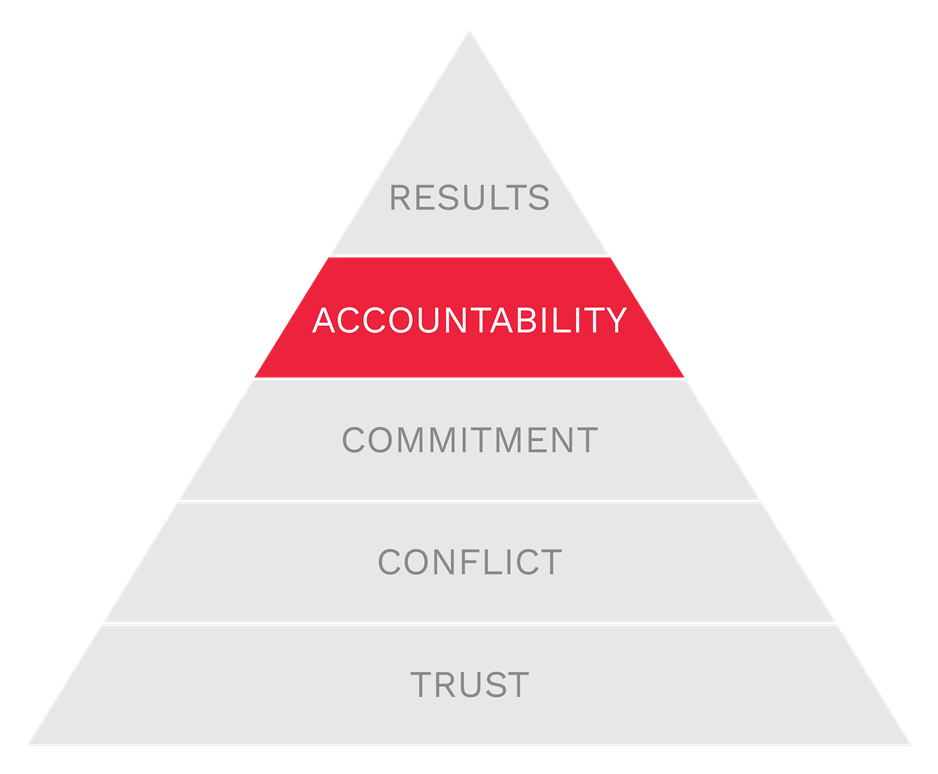
Accountability
Accountability is typically the most difficult behavior for a team to master. Most will never get to the point where each team member routinely holds all other members accountable. Reaching and maintaining good scores in the previous steps will make accountability much easier. Accountability can become part of a team's overall dynamic.

Results
Achieving team objectives is why the team exists. If each prior behavior is functioning well, each member of the team is focused on achieving the team’s goal. The team goal becomes more important than any individual’s personal goal, and everyone feels rewarded by being part of the team result.
The five behaviors that make a team cohesive are rarely mastered. As things change (members, leaders, goals, etc.) the team will move through the different behaviors. Often, change will require the team to start over having to rebuild trust, thus working through each behavior again.
Many teams have read about Lencioni's model. The Five Behaviors assessments help teams apply that model to their specific team or teams. A cohesive team not only accomplishes more for the organization, but is more fun to be a part of. The work to build the most cohesive team possible is well worth the effort.

The Five Behaviors Team Development
Improve teamwork and get results with the Patrick Lencioni model for team development.

The Five Behaviors Personal Development
Teach the essential teamwork principles that can help make anyone a better, more effective teammate—no matter what team they're on.


